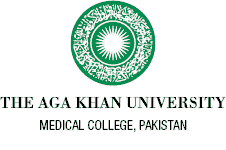Indeed, on November 30, 2016, the fears of an outbreak were confirmed and the teams were sent to investigate. The picture that emerged was of 201 cases of extremely drug resistant Typhoid (XDR) from December 2016 to June 2017 with Qasimabad and Latifabad neighbourhoods being the worst hit.
Over the next three years, 10,195 cases of XDR Typhoid surfaced. It was worrying that 69% of cases were found in Karachi and 27% in Hyderabad.
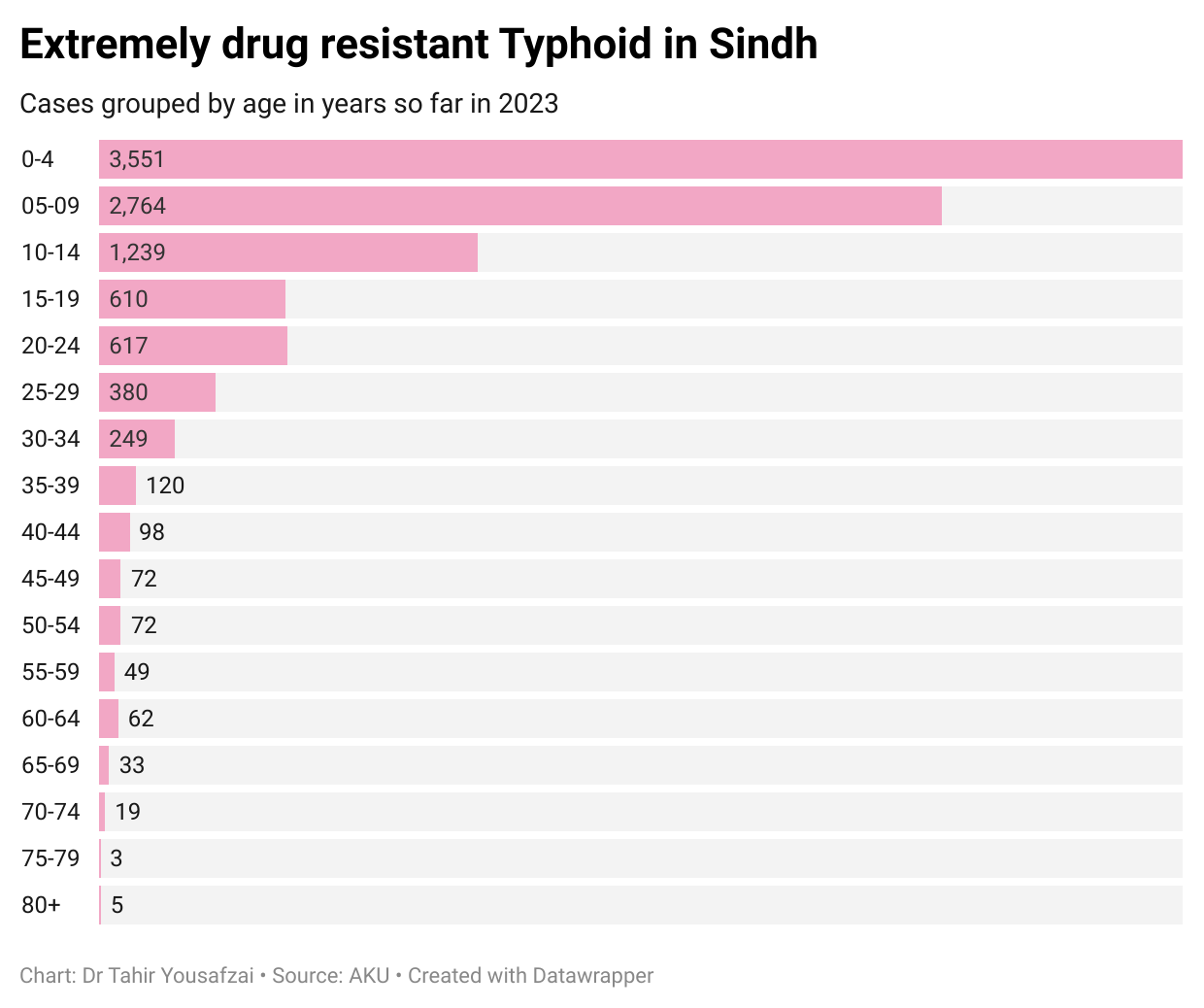 With the recommendation of the WHO, the department of Health, introduced the Typhoid Conjugate Vaccine or TCV in the EPI schedule in phases from 2019, followed by a catch-up campaign (on the fifth visit of a child at the age of 9 months).
With the recommendation of the WHO, the department of Health, introduced the Typhoid Conjugate Vaccine or TCV in the EPI schedule in phases from 2019, followed by a catch-up campaign (on the fifth visit of a child at the age of 9 months).
The government kicked off the mass vaccination campaign in Hyderabad where 220,000 children under 10 years of age were targeted. The overall Sindh target was 10 million children, aged between 9 months to 15 years. “It was very unfortunate that Pakistan had an extensively drug resistant outbreak and because of that, we were the first country to introduce the vaccine,” says Prof. Farah Qamar.
She was speaking at adissemination seminar organised on Monday, October 12, 2023, by AKU’s Department of Paediatrics & Child Health on 'Impact Assessment of Typhoid Conjugate Vaccine and Updates on Shigellosis Surveillance Study.' Representatives from the government, EPI, WHO and AKU attended.
The vaccination campaign went all out, running for 12 days from 9am to 4pm daily. Over 8,000 skilled vaccinators fanned out in mobile vans, bazaars and even parks. The news was spread by lady health workers, community volunteers, mosques, mobile phone messages, school teachers, on TV, on social media, posters, banners.
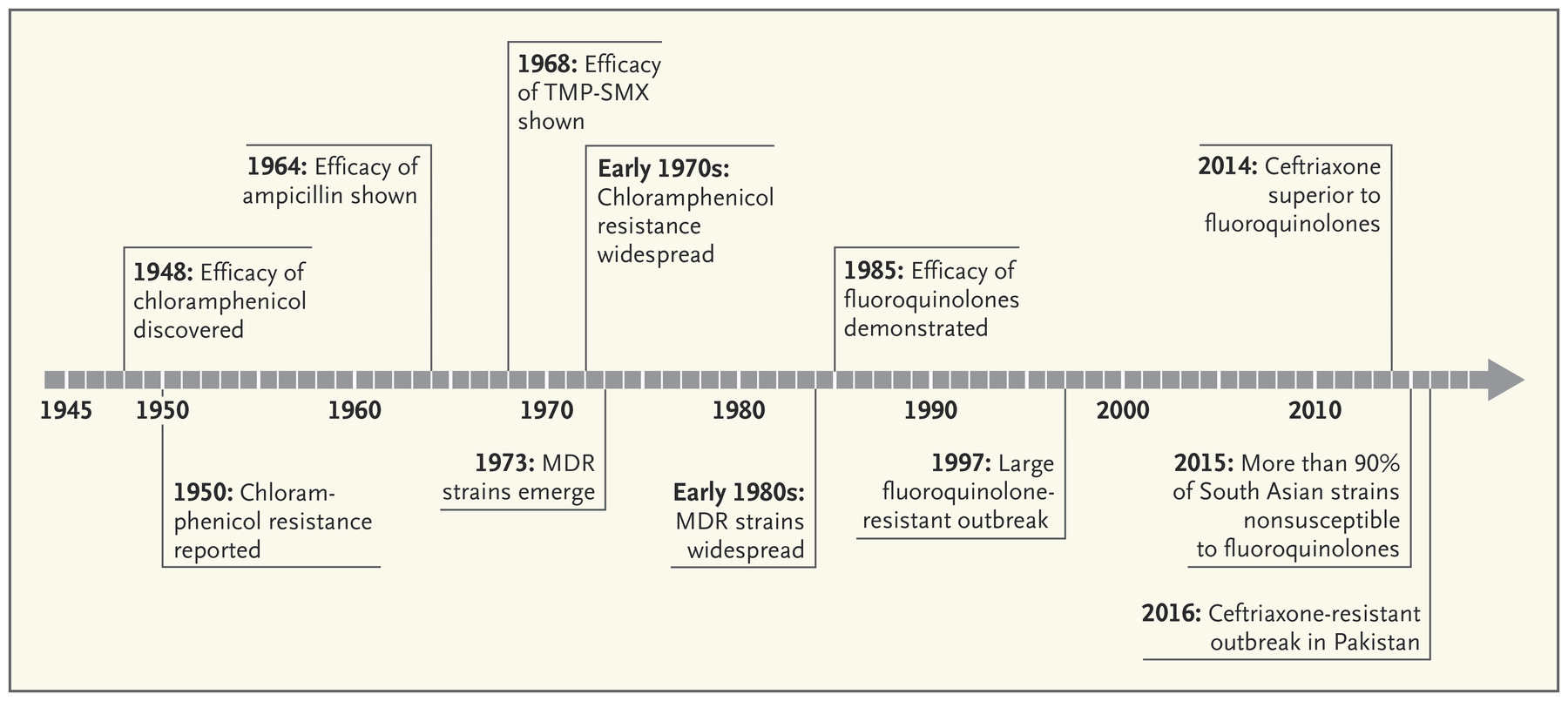
Caption: This timeline of Typhoid was published in the New England Journal of Medicine in 2018 with the article, 'Extensively Drug-Resistant Typhoid — Are Conjugate Vaccines Arriving Just in Time?'
According to Dr Jamal Raza, this campaign was like none other seen before, and was a success for the government. “We saw a great decline in the number of Typhoid cases in our clinical practice, in the hospital settings.” Dr Raza is the Executive Director of the Sindh Institute of Child Health and Neonatology.
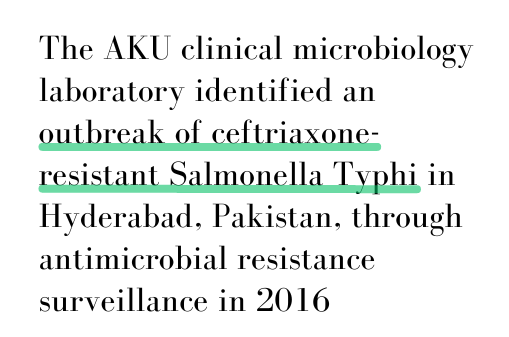 A mass campaign is more effective than routine immunization. “We were able to show [in Hyderabad] that this is a safe vaccine when given in a mass setting and that it protects 95% of cases among children vaccinated,” adds Dr Farah.
A mass campaign is more effective than routine immunization. “We were able to show [in Hyderabad] that this is a safe vaccine when given in a mass setting and that it protects 95% of cases among children vaccinated,” adds Dr Farah.
By now, the WHO is operating 22 surveillance sites across Pakistan to track Typhoid, according to Dr Waqar Ahmad Soomro, a national protection officer for the WHO. There are four in Karachi because the highest number of cases have come to the National Institute of Child Health and Dow University of Health Sciences in the city. The surveillance is crucial to be able to tell where Typhoid is hitting the worst so those areas can be targeted.
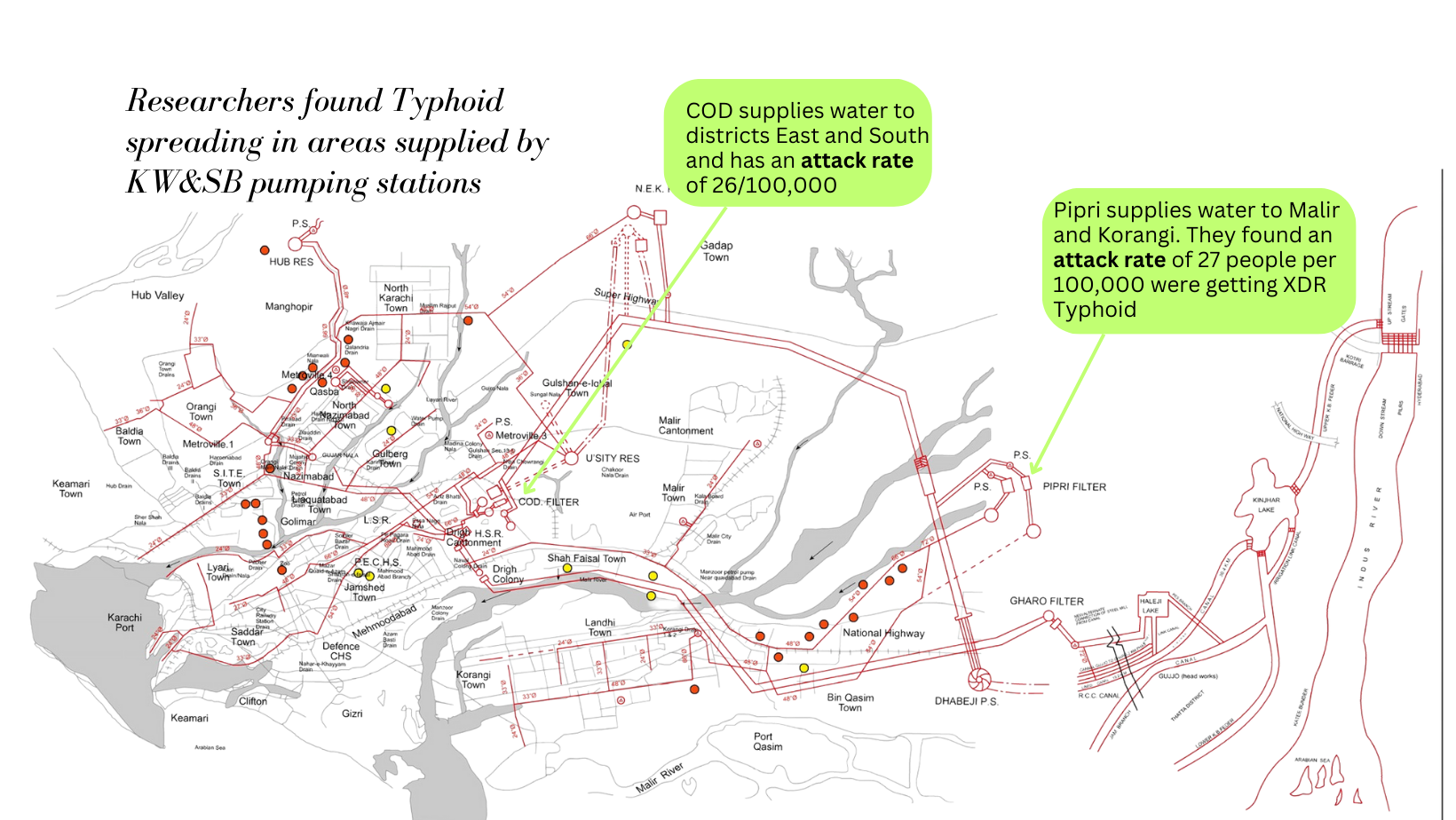
Mapping showed, for example, that in Karachi chlorination of the water supply was essential. The highest number of cases were reported from District East and South. This was Gulshan and then Saddar. Incidentally, the highest number of
naegleria fowleri cases came from here too, according to Dr. Muhammad Asif Syed, the Director of the Disease & Surveillance Response Unit. “We calculated that the main problem was somewhat in the COD pump and at Pipri. If we increase chlorination here, we could reduce the burden of XDR Typhoid fever in Malir, Korangi, East and South.”
Dr. Naeem Quraishi from the EPI said that they were hopefully going to hold another vaccination campaign in February or March 2024. This is crucial as the data suggests that the trend has gone down since the vaccine was introduced, according to Dr. Tahir Yousafzai. More than 60% of cases were emerging to be XDR Typhoid in Karachi.
Our Research
Aiemjoy, Kristen et al. “Estimating typhoid incidence from community-based serosurveys: a multicohort study.” The Lancet. Microbe vol. 3,8 (2022): e578-e587. doi:10.1016/S2666-5247(22)00114-8  Typhoid Abstract FQ Urdu.pdf
Typhoid Abstract FQ Urdu.pdf
Andrews, Jason R et al. “Typhoid conjugate vaccines: a new tool in the fight against antimicrobial resistance.” The Lancet. Infectious diseases vol. 19,1 (2019): e26-e30. doi:10.1016/S1473-3099(18)30350-5
Yousafzai, M. Tahir et al. "Ceftriaxone-resistant Salmonella Typhi Outbreak in Hyderabad City of Sindh, Pakistan: High Time for the Introduction of Typhoid Conjugate Vaccine." Clinical Infectious Diseases, vol. 68, Issue Supplement_1, (2019): S16–S21, doi.org/10.1093/cid/ciy877


